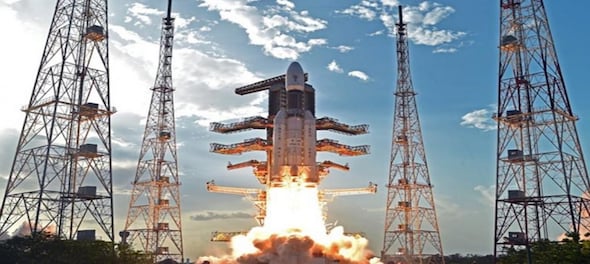
The Indian Space Research Organisation (ISRO) is set to conduct two abort test missions of the Gaganyaan this year. It has developed special test vehicles (TV) that will take the systems up to a certain height, simulate failure, and then check the escape system. ISRO has also set new deadlines for major missions including its first solar mission and third lunar mission. These are set to take place in the first quarter of next year, as per reports.
Gaganyaan abort test mission
The abort missions test the systems that can help the crew escape from the spacecraft mid-flight in case of a failure. ISRO has developed test vehicles to send the Gaganyaan’s systems up to a certain height, then simulate a failure to check the escape system and fall back into the Bay of Bengal.
The escape system is designed with five ‘quick-acting’ solid fuel motors with a high burn rate propulsion system, along with fins to maintain stability. By firing explosive nuts, the crew escape system will separate from the crew module. Essentially, the mission will be conducted to demonstrate the crew escape system in an in-flight abort scenario.
The first abort test will be conducted using the special test vehicle (TV) as part of Gaganyaan. The crew module will separate from the TV at a height of around 11km (from sea level), then attain an altitude of around 15km before falling back in the Bay of Bengal.
The test is called TV technology demonstrator-1 (TV-TD1) mission which was earlier planned for August but now it is expected to be carried out in September. Union minister Jitendra Singh and ISRO chairman S Somanath have confirmed the mission.
In the TV-TD1 mission, an intentional anomaly will be caused to allow the crew module to come out of the TV and do the tumbling manoeuvres, deploy parachutes, and land in a designated spot in the sea before being recovered.
According to the ISRO, the mission will demonstrate the descent phase, parachute deployment and recovery of the escape system. The crew module will separate from the test vehicle and escape from the trajectory of the vehicle, before dropping back. The final mission profile will be made public at a later stage, The Times of India reported.
As per the report, the ground team at Sriharikota will be tasked with the tracking of the test vehicle. Once the crew module is separated/ejected from the test vehicle, it will have a free fall before opening the parachute. The navigation and guidance, control systems and parachutes will be demonstrated in the abort mission.
For the second abort mission, the four astronaut-elects, are continuing training and are expected to start simulation training soon, an official told TOI.
The initial target for the second abort test is December 2022. However, it may change depending on the results of the TV-TD1 mission.
ISRO has realised four such special test vehicles out of which two missions are slated to take place this year.
ISRO’s upcoming solar and lunar missions
ISRO’s next scientific mission will be the astronomical space observatory, XpoSat scheduled for next year. The XpoSat is designed to study cosmic X-rays and will be India’s second astronomical observatory in space after the Astrosat.
ISRO’s first solar mission will be the Aditya L1 mission in which an Indian spacecraft will travel 1.5 million km from the Earth to the L1 or Lagrangian point between the Sun and Earth. These points between two celestial bodies, the gravitational pull of both bodies is equal to the force required to keep the satellite in orbit without expending fuel. The Aditya L1 will observe only the outer layers of the Sun called the solar corona.
ISRO also plans the launch the Chandrayaan 3 mission, in its second attempt to land a rover on the moon. The Chandrayaan 3 will be a lander-rover mission aiming for a soft landing on the Moon. The lander-rover will use the existing orbiter of the Chandrayaan-2 mission to communicate with Earth. The orbiter was launched in 2019 and has a calculated mission life of seven years.
(Edited by : Sudarsanan Mani)
Check out our in-depth Market Coverage, Business News & get real-time Stock Market Updates on CNBC-TV18. Also, Watch our channels CNBC-TV18, CNBC Awaaz and CNBC Bajar Live on-the-go!


Lok Sabha elections 2024: BJP's bid for breakthrough in Kerala is an uphill battle, say experts
Apr 23, 2024 9:53 PM
2024 Lok Sabha Elections | PM's Rajasthan speech — has it anything to do with the post-poll mood of the first phase
Apr 23, 2024 3:45 PM
It's KGF 2024 and here's a look at the key characters in Karnataka
Apr 23, 2024 3:17 PM
JP Morgan: Nifty may test 25,000 if BJP wins in 2024 Lok Sabha elections
Apr 23, 2024 2:23 PM

